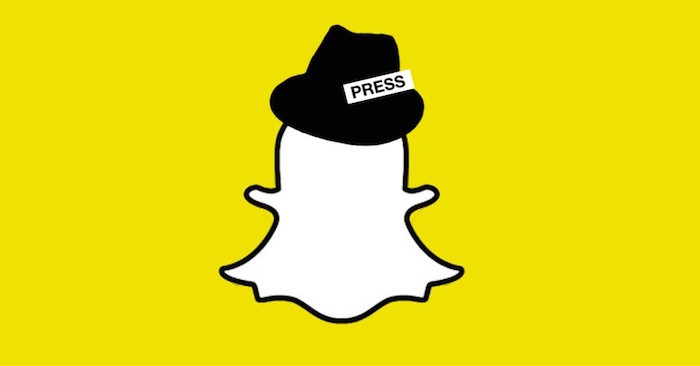
This month, as millions of Muslims made the annual Hajj to Mecca, Snapchat set up a Live Story around the pilgrimage. Using a geofence that located users in Mecca and the surrounding areas in Saudi Arabia, Snapchat let users submit photos or short videos that its editors then curated into a story it showcased to its users around the world.
While media outlets from around the world covered the Hajj, especially after the deadly stampede last week, Snapchat could take its viewers into places, such as the mosques, that traditional TV crew couldn’t reach. (The Hajj Snapchat Live Story was compiled before the stampede happened.)
“At Snapchat, we have everyone’s camera at our disposal,” said Peter Hamby, Snapchat’s head of news during a talk Tuesday at Harvard’s Shorenstein Center on the Media, Politics and Public Policy. Snapchat’s Live Stories disappear 24 hours after they’re published, and Hamby compared them to television in the era before DVR — people would gather around their sets to watch big moments unfold because they wouldn’t be able to rewatch them.
“At CNN, we would cover an event or an interview with 1 or 2 camera. At Snapchat, we have everyone’s camera at our disposal.” – @PeterHamby
— Joseph Lichterman (@ylichterman) September 29, 2015
After the same-sex marriage ruling, Snapchat put geofences around courthouses. Was able to get footage that TV cameras weren’t able to.
— Joseph Lichterman (@ylichterman) September 29, 2015
. @peterhamby: We think about Snapchat as TV before DVR. They’re big moment events. You have have to be there.
— Joseph Lichterman (@ylichterman) September 29, 2015
About 15 million people globally view Live Stories each day, Hamby said. Snapchat says it has more than 100 million users, and that user base is predominantly young — 45 percent of Snapchat users are between 18 and 24 years old, according to a Business Insider Intelligence report from June. Hamby joined Snapchat this spring from CNN, where he was a national political reporter.
Because its audience is so young, Snapchat’s approach to news is mostly educational, Hamby said, noting that Snapchat isn’t going to be breaking incremental news on its platform. Instead, he pointed to a recent Live Story Snapchat compiled around 2016 presidential candidates’ positions on the Iran deal. The company had staffers at various campaign events and also used snaps from regular users at the events.
Snapchat stories about #IranDeal pic.twitter.com/E5cJRiHuBH
— Mona Salama (@PoliticalCrazy) September 10, 2015
YES TO THIS GIRL ON THE IRAN DEAL SNAPCHAT pic.twitter.com/fFH1XK9vSh
— lissa (@lissssuhhh) September 10, 2015
“A 19-year-old may not come across what the Iran deal is, but if it’s in their face in Snapchat, where they’re living all day, I kind of see that as a social good,” Hamby said.
To that end, the most effective journalists and news organizations on Snapchat, Hamby said, are the ones who treat it as its own distinct platform. He said the presidential candidates who used Snapchat best were Wisconsin governor Scott Walker (who has since dropped out of the race) and Ohio governor John Kasich. They’ve been successful, he said, because they both have young children who use Snapchat themselves.
People who use Snapchat in an artificial way and think of it like another Instagram are the ones who have difficulty with it — @PeterHamby
— Joseph Lichterman (@ylichterman) September 29, 2015
Who are the top @Snapchat politicians? People with kids, says @PeterHamby. Best? @Schwarzenegger. "He uses it like regular people use it."
— Ann Marie Lipinski (@AMLwhere) September 29, 2015
“It takes someone that age who really knows the platform well, to nail it,” @PeterHamby says.
— Joseph Lichterman (@ylichterman) September 29, 2015
In addition to the Live Stories that Snapchat itself produces, there are also publishers, from BuzzFeed and Mashable to ESPN and National Geographic, that produce custom content for Snapchat’s Discover platform. A number of publications also have their own Snapchat accounts and produce their own stories for their followers.
A full audio recording of the session with Hamby is available here: